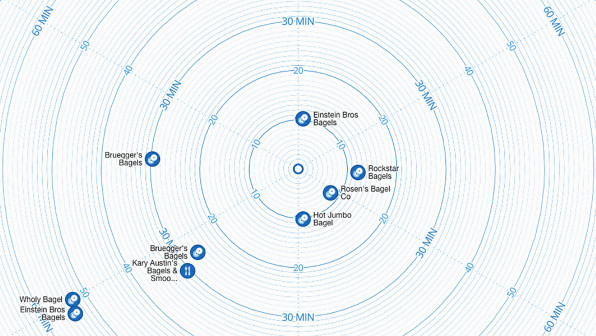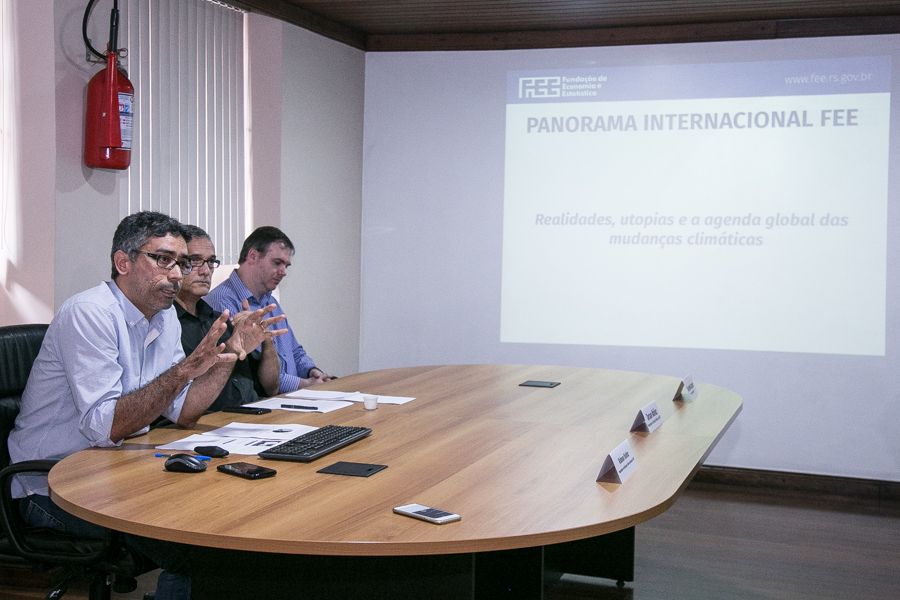Beer, Hordenine, Dopamine D2, Reward center
Beer Can Lift Your Spirits: Hordenine Activates Brain’s Reward Centerby Neuroscience News Hordenine, a substance present in beer and malted barley, activates dopamine D2 receptors through G proteins, leading to a possibly prolonged effect on the brain's reward center, researchers report. Read more of this post *Neuroscience News* | September 30, 2017 at 9:23 am | Tags: beer, D2 receptor, food, G proteins, hedonic hunger, hordenine | URL: http://wp.me/p4sXNK-bpa Comment See all comments
Hippocampus
New Functions of the Hippocampus Unveiled [image: Neuroscience News]NEUROSCIENCE NEWSSEPTEMBER 29, 2017 FEATUREDNEUROSCIENCEOPEN NEUROSCIENCE ARTICLES8 MIN READ *Summary: A new PNAS study reveals the hippocampus can promote brain wide functional connectivity in the cerebral cortex, and enhance sensory response. Researchers say the hippocampus should be considered to the the ‘heart of the brain’.* *Source: University of Hong Kong.* *A research team led by Lam Woo Professor of Biomedical Engineering Ed X. Wu of the Department of Electrical and Electronic Engineering at the University of ... mais »
Dia Mundial do Coração
Take care of your heart Four out of five people who die from heart disease are killed by a heart attack or a stroke. Smoking tobacco, eating an unhealthy diet, physical inactivity and the harmful use of alcohol all trigger heart disease. The Global Hearts Initiative focuses on preventing and controlling heart disease by managing risk factors. Learn more*Dia Mundial do Coração – Setembro do Coração* [image: Dia Mundial do Coração - email mkt]
New Way Of Mapping
There’s An Entirely New Way Of Mapping The World, And It’s BrilliantForget latitude and longitude–how about how long it takes you to get there? [image: There’s An Entirely New Way Of Mapping The World, And It’s Brilliant] [Photo: Peter Liu] - - - - BY KATHARINE SCHWAB3 MINUTE READ For centuries, people have relied on the same types of maps. Whether a map is interactive or hand-colored in a book, it offers latitude and longitude as the key indexes for getting from point A to point B. But designer and software engineer Peter Liu thinks he’s come up with an entirely new... mais »
RS: três rios mais poluidos
Esgoto sem tratamento coloca 3 rios gaúchos entre os 10 mais poluídos do Brasil Os pesquisadores Robson Valdez, Tarson Nuñez e Martinho Lazzari apresentaram a 9ª edição da publicação Panorama Internacional FEE. Foto: Maia Rubim/Sul21 Publicado em: setembro 28, 2017Lucas Rohan Três dos rios mais poluídos do Brasil estão na Região Metropolitana de Porto Alegre e são responsáveis pelo abastecimento de cerca de 1,5 milhão de pessoas: Sinos, Gravataí e Caí. A informação surpreende, mas não é novidade para os pesquisadores da Fundação de Economia e Estatística (FEE), que lançou nesta qui... mais »
Desigualdade BR
[image: A judoca Stefannie Arissa Koyama, que disputará o Mundial de Budapeste pela seleção brasileira]Brasil não cresce se não reduzir sua desigualdade, diz Thomas Piketty O economista Thomas Piketty durante entrevista em hotel em SP *RICARDO BALTHAZAR* DE SÃO PAULO 28/09/2017 02h00 O Brasil não voltará a crescer de forma sustentável enquanto não reduzir sua desigualdade e a extrema concentração da renda no topo da pirâmide social, diz o economista francês Thomas Piketty./.../
Cardiologia - HMV
28 DE SETEMBRO DE 2017 [image: Foto do perfil de Carisi A Polanczyk]Hospital Moinhos de Vento reinaugura Centro de CardiologiaREFORMA DE TRÊS meses modernizou setor, que passa a atender em novo modelo assistencial O Hospital Moinhos de Vento reinaugura o Centro de Cardiologia hoje, véspera do Dia Mundial do Coração. Após três meses de reforma e com um investimento de aproximadamente R$ 2,2 milhões, a unidade, no terceiro andar da instituição, ganha um novo modelo médico-assistencial. A estrutura física e tecnológica do centro, que integra a parte mais antiga do prédio C - onde ficam ... mais »
Cidades
Future tech will give you the benefits of city life anywhere 11:07 minutes · TED@UPS Don't believe predictions that say the future is trending towards city living. Urbanization is actually reaching the end of its cycle, says logistics expert Julio Gil, and soon more people will be choosing to live (and work) in the countryside, thanks to rapid advances in augmented reality, autonomous delivery, off-the-grid energy and other technologies. Think outside city walls and consider the advantages of country living with this forward-thinking talk. Watch now »
Octoberfest
Celebrate Oktoberfest with Us *Prost!*Oktoberfest is a time honored tradition celebrating the marriage of Bavarian Princess Therese von Sachsen-Hildburghausen and Crown Prince Ludwig in October of 1810 — and beer, of course. Since the publication of our first issue in 1845, *Scientific American* has been steeped in all things beer, from recipes and the chemistry of brewing to technology and the tools of the trade. With an All Access subscription, you’ll be able to tap into these fascinating stories and many others about one of the world’s most cherished beverages. SUBSCRIBE • January... mais »
Aging, Metabolism, inflammation
Battling Belly Fat: Specialized Immune Cells Impair Metabolism in Agingby Neuroscience News Researchers reveal how the macrophages become inflamed as we age and prevent neurotransmitters from functioning correctly. Read more of this post *Neuroscience News* | September 27, 2017 at 1:07 pm | Tags: ATGL, macrphages , me tabolism, NLRP3 | URL: http://wp.me/p4sXNK-bnT Comment See all comments
Ângelo Domingo Pretto
Dia 09 de Outubro 2017 de Angelo Domingo Pretto nosso cliente e amigo: Parabéns!
The World Food Crisis: The Way Out
We are pleased to inform you that the 10th anniversary issue of the *Right to Food and Nutrition Watch, “The World Food Crisis: The Way Out”, *is now available online in English, Spanish, French and Portuguese here. With the world trapped in a multifold crisis, this year’s *Watch* takes stock of the past decade and present thought-provoking discussions and alternative solutions for finding our way out. You can follow the *international launch at FAO HQ in Rome today, 26 September*, *live* on our Facebook page here from 12:30 to 14:00, and subscribe to participate at the second *inte... mais »
Le Petit Prince
*Hoje, graças à conversa com uma amiga e vizinha nonagenária, lembrei-me do Pequeno Príncipe que ajudei a divulgar por aqui em junho de 1954, dez anos depois de seu lançamento nos EEUU e na França. Quem nos apresentou a obra de Saint-Exupery foi um Frei Dominicano - Dom Marcos Barbosa que deu um curso de Liturgia, promovido pelo Cônego Alberto Etges, enquanto Reitor da PUCRS. (Meu outro amigo - Alexandre Gruszynski - também me ajudou atualizar essas memórias).* Le Petit Prince O Principezinho (PT) O Pequeno Príncipe (BR) [image: O-pequeno-príncipe.jpg] Capa da edição brasileira do liv... mais »
Adição, Dependência, Compulsão e Impulsividade
[image: Sabrina Presman's photo.] SEP29 Lançamento do livro Adição, Dependência, Compulsão e Impulsividade Public · Hosted by Clif - Medicina do Comportamento Interested Share - *clock* Friday at 8 PM 3 days from now · 20–25°Partly Cloudy - *pin* Show Map Livraria da Travessa (Ipanema) R. Visconde de Pirajá, 572 - Ipanema, 22.410-002 Rio de Janeiro, Rio de Janeiro - *envelope* Invited by Analice Gigliotti
Human Development Report 2016
Counting What Counts in Development *Author: Selim Jahan, Director of the Human Development Report Office, UNDP* To most people, “development” is best measured by the *quantity* of change – like gains in average income, life expectancy, or years spent in school. The Human Development Index (HDI), a composite measure of national progress that my office at the United Nations Development Programme oversees, combines all three statistics to rank countries relative to one another. What many do not realize, however, is that such metrics, while useful, do not tell the entire story of developm... mais »
Médicaments contrefaits
[image: Interpol a annoncé lundi une saisie record de 25 millions de médicaments contrefaits et interdits dans le monde, et distribués sur internet, pour un montant de plus de 51 millions de dollars.]Saisie record dans le monde de médicaments contrefaits Interpol a annoncé lundi une saisie record de 25 millions de médicaments contrefaits et interdits dans le monde, et distribués sur internet, pour un montant de plus de 51 millions de dollars. Parmi les médicaments saisis, figurent notamment des compléments alimentaires, des pilules anti-douleur, des traitements contre l'épilepsie, le... mais »
Vagus nerve stimulation
Breakthrough Nerve Implant Rouses Man From 15-Year Coma It’s hard to believe his eyes. A French man stuck in a vegetative state since a 2001 accident began to show signs of life after doctors installed an experimental implant to stimulate his vagus nerve. Six months later, the 35-year-old is classified as “minimally conscious” and can follow movements with his eyes. He reportedly even cried in response to music. Researchers hope this high-profile case could help secure funding for clinical trials — and potentially change the lives of the millions who sustain traumatic brain injuries... mais »
Glicemia: sensores
De |Reginaldo H. Albuquerque (Brasília): escrevi um artigo para o site da SBD. Publicado no site em fins de junho alcançou mais de 13.3 mil visualizações. O link é: https://goo.gl/Lfe8Ak Este sensor, lançado na Europa em 2014, somente agora foi liberado para uso nos Estado Unidos. No recente congresso de diabetes em Lisboa recebeu os seguintes comentários : Reginaldo Albuquerque shared a link. 21 hrs Na semana passada ocorreu em Lisboa o congresso europeu de diabetes. No link abaixo tem um excelente vídeo com 10 minutos de duração sobre os sensores. O libre foi recentemente lança... mais »












